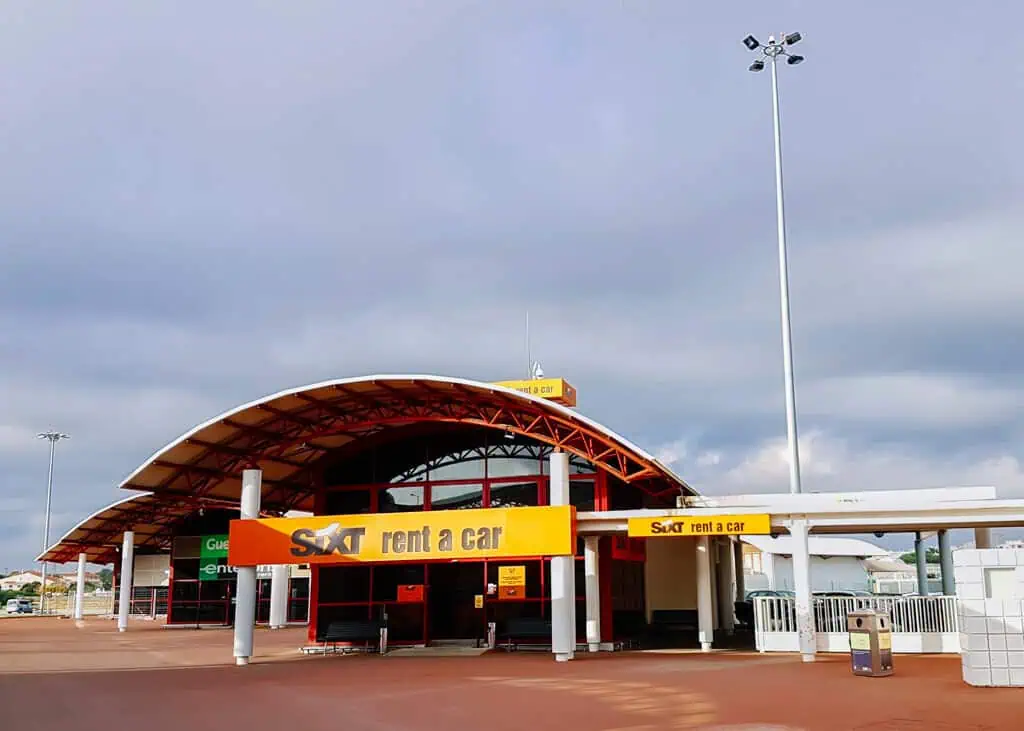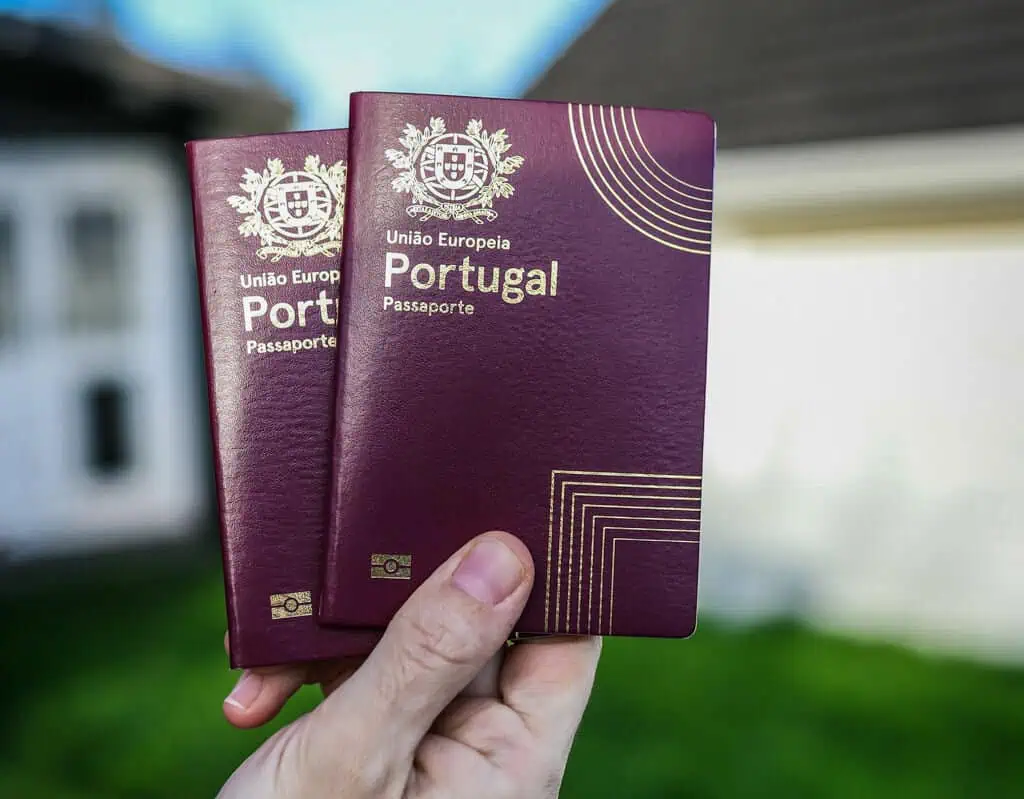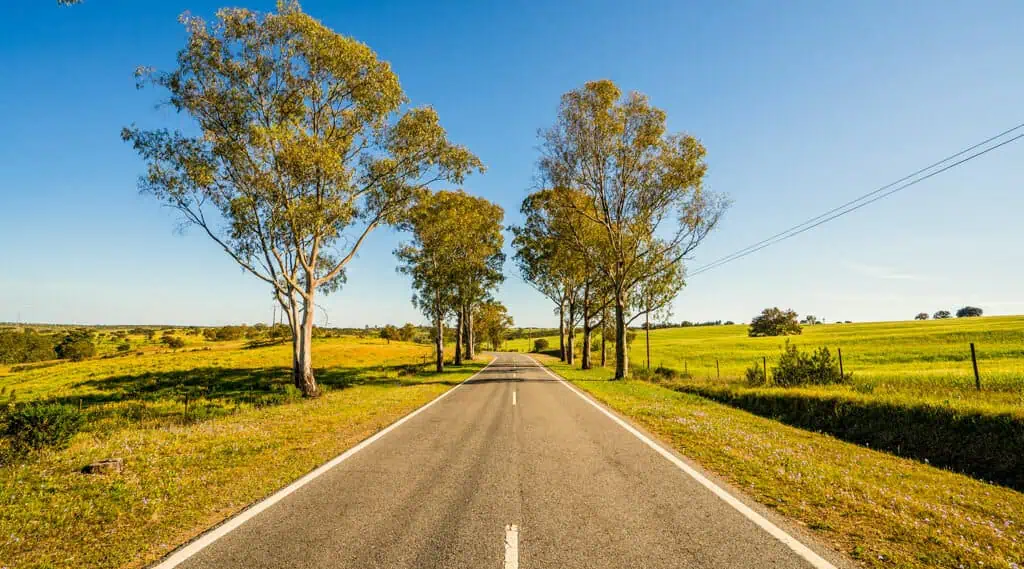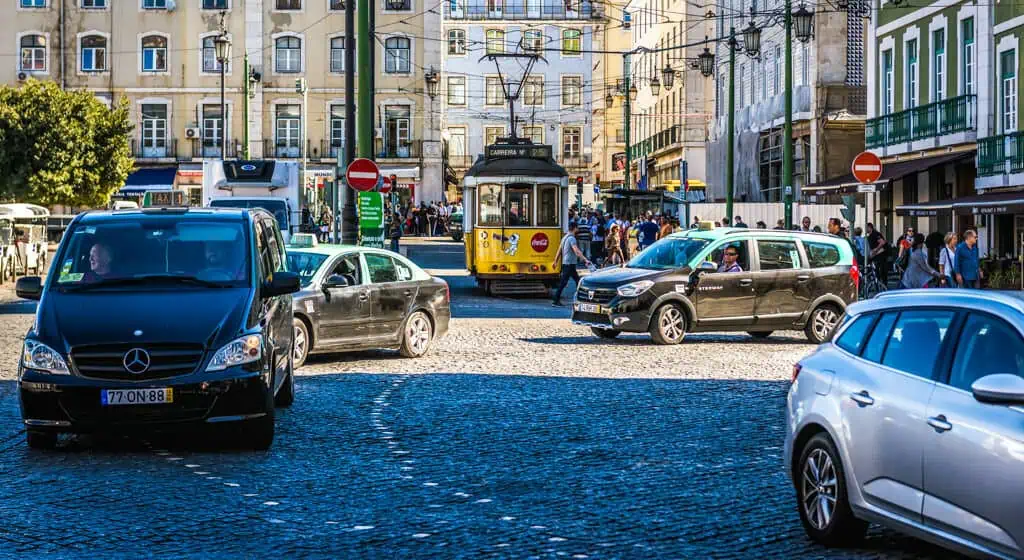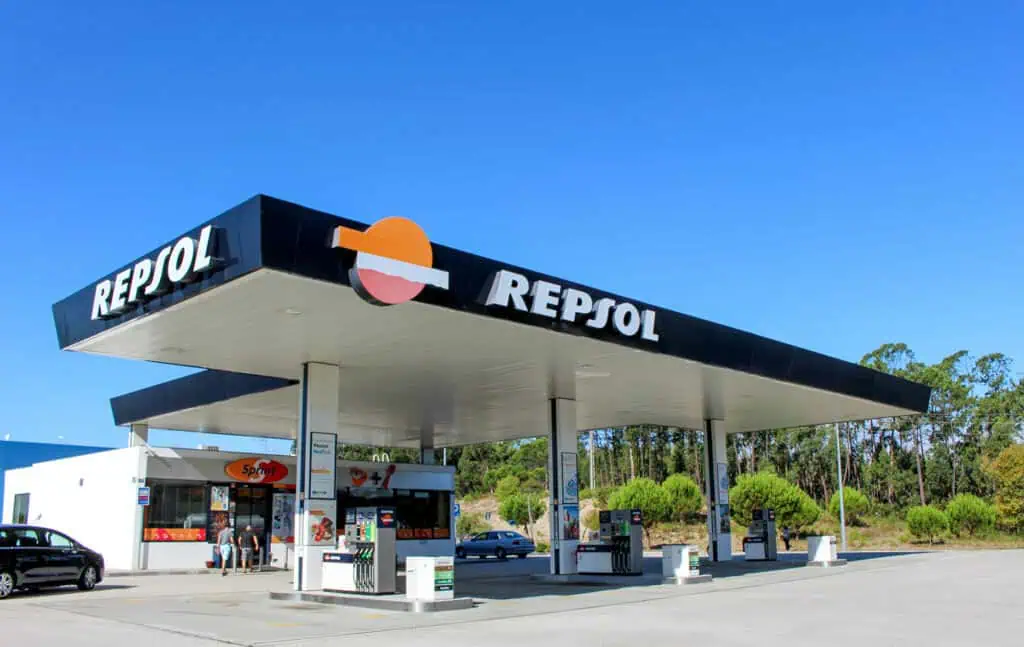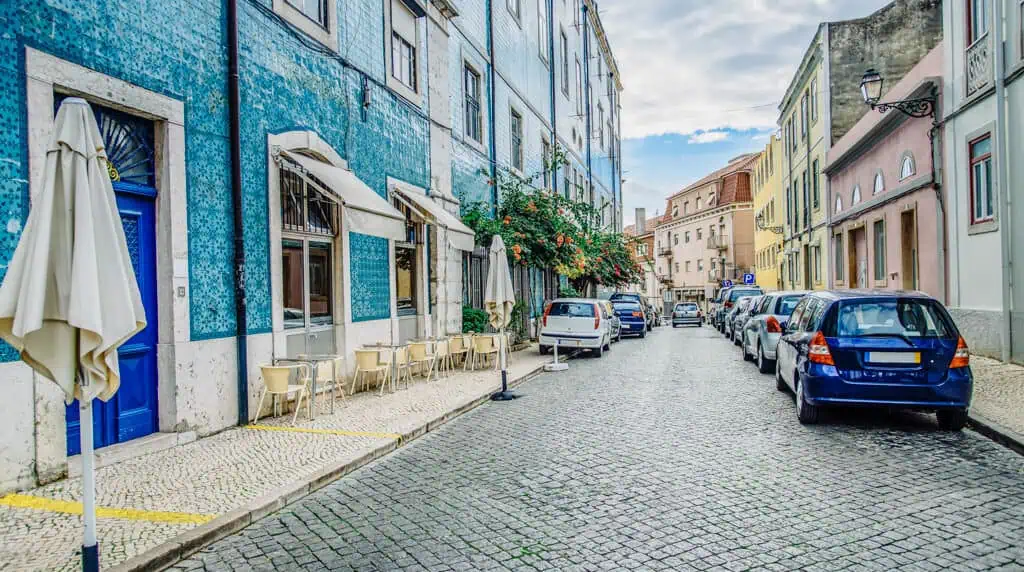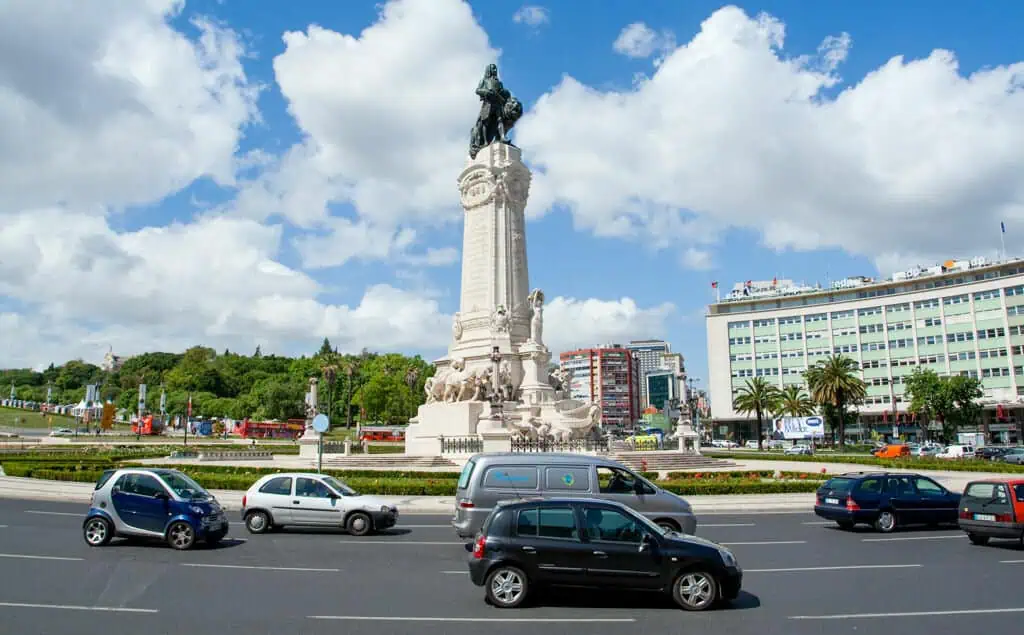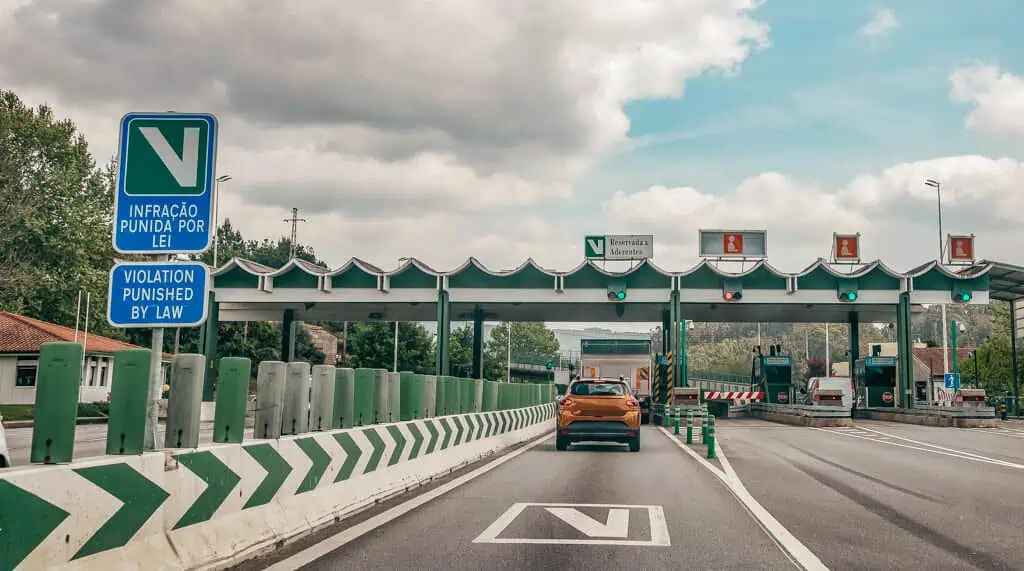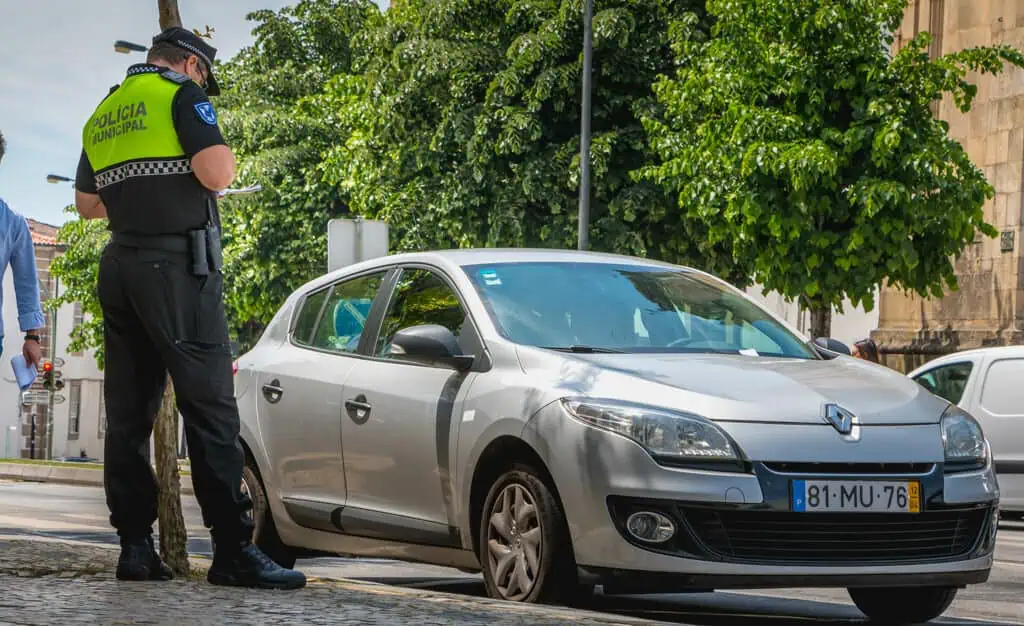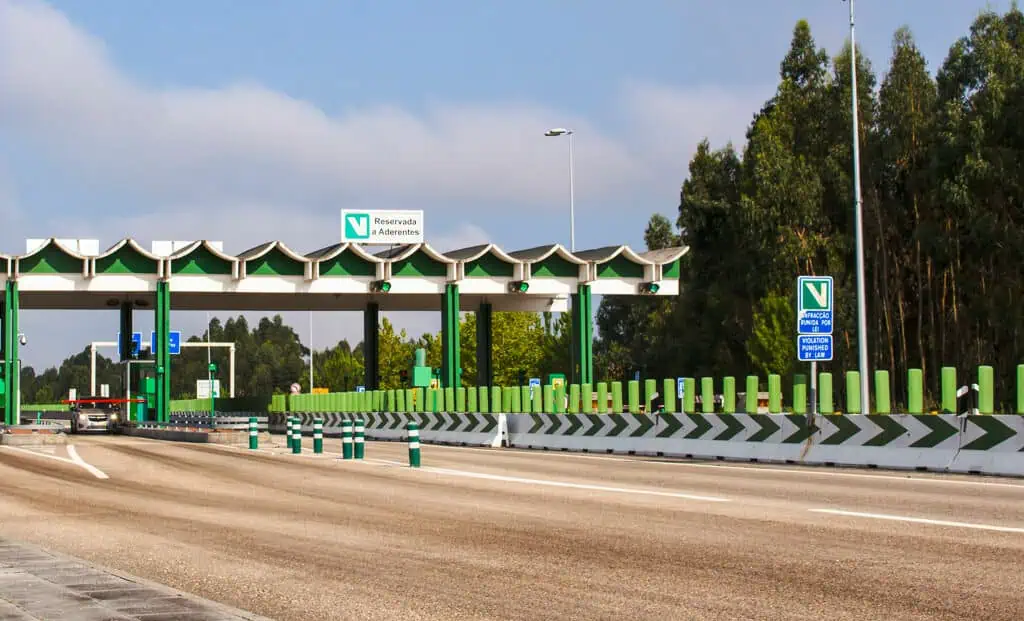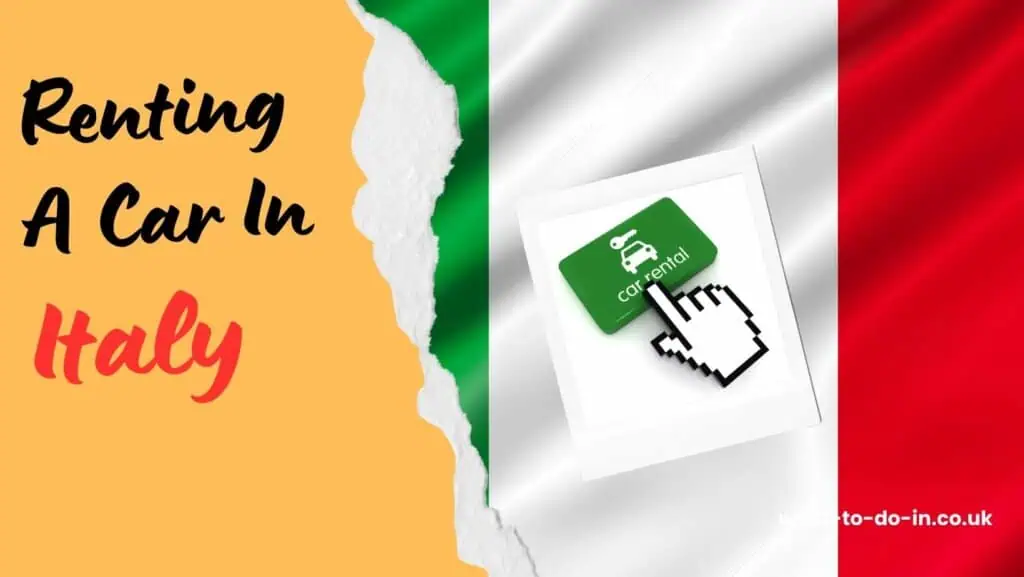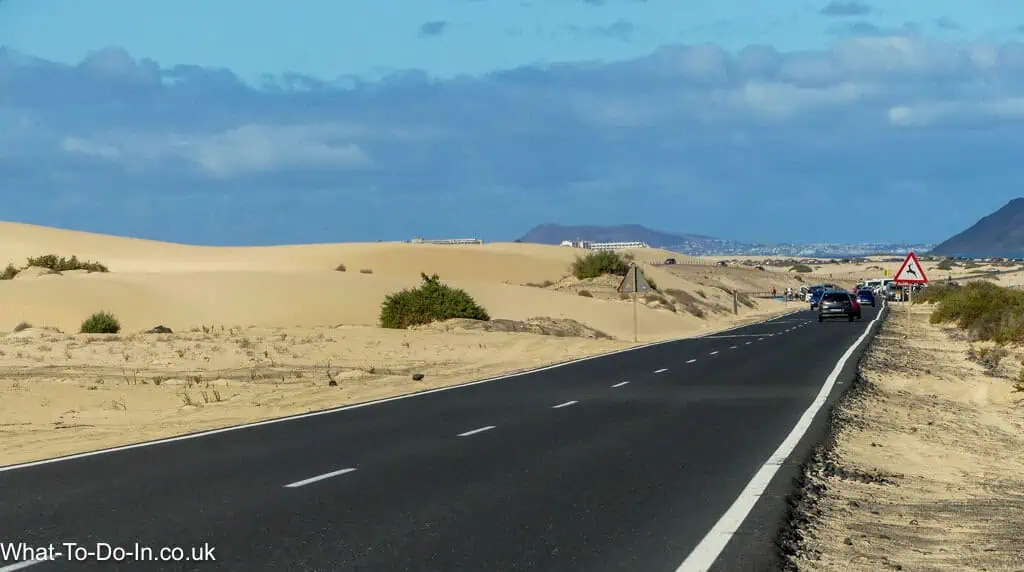Nestled along the sun-kissed Iberian Peninsula, Portugal’s enchanting landscapes and historic cities call for exploration that goes beyond the confines of public transport. With an impressive 65% of tourists opting for the the convenience of a hired vehicle, renting a car becomes an invaluable tool for discovering the nation’s hidden gems at your own pace. Whether it’s weaving through the winding roads of the Douro Valley, marveling at the majestic cliffs of the Algarve, or delving into the architectural wonders of Lisbon and Porto, renting a car in Portugal offers an unrivaled sense of freedom. Visitors can indulge in the unmatched ease of charting their own course, often finding themselves at the helm of the latest models because the Portuguese car rental fleet is one of the most modern in Europe, with an average vehicle age of under 1.5 years.
Why Rent a Car in Portugal?
Imagine winding along the sun-kissed cliffs of the Algarve, uncovering the hidden beaches tucked away along the coastline, or meandering through the verdant valleys of Douro, with the freedom of your own itinerary and the pulse of adventure guiding your days. During our travels through Portugal, we found that renting a car offered an a real sense of freedom. It allowed us to explore at our own pace, far from the confines of public transport timetables, reaching hidden gems that were otherwise inaccessible. Picture stopping for a spontaneous seafood feast in a small village, or pulling over to soak in the views whenever the mood strikes – this is what a Portuguese road trip is all about. As you continue reading, we’ll guide you through the intricacies of car rental in Portugal, from finding the best deals to navigating the country’s enchanting roads, ensuring you’re well-prepared for the journey that awaits.
What Size Rental Car: Big or Small?
When my husband Aidan and I traveled to Portugal, we had the opportunity to rent both big and small cars, which provided us with insights into the advantages and disadvantages of each option. Your travel style and the nature of your trip will greatly influence whether you should opt for a larger vehicle or something more compact.
Reasons to Choose a Big Car
- Comfort and Space: A larger rental car means more room for passengers and luggage. If you’re traveling with family or a group, the extra space can make long drives around Portugal much more comfortable. You won’t have to worry about fitting all your suitcases in the boot or squashing together in a tight back seat.
- Safety: Sometimes, people feel safer in a bigger car due to their size and weight. More substantial vehicles can offer better crash protection and might have more advanced safety features. This can be reassuring, especially when navigating unfamiliar roads.
- Driving in Rural Areas: If your journey will take you through rural areas with rougher terrain, a bigger car with higher ground clearance and more power can handle country roads and dirt tracks better than a smaller vehicle.
Reasons to Choose a Small Car
- Ease of Navigating and Parking: Portugal’s cities, especially historic areas like Lisbon and Porto, have narrow streets and limited parking spaces. A smaller car makes it easier to maneuver through tight spots and find parking. It’s less stressful when you’re not worrying about squeezing through gaps or parking a large vehicle in a small space.
- Economy: Smaller cars typically consume less fuel and are more economical. With the fuel prices being a considerable part of the travel budget, a smaller car can keep costs down, allowing you to spend more on experiences and less on gas.
- Environmental Impact: For the eco-conscious traveler, a small car often means a smaller carbon footprint. By choosing a more fuel-efficient vehicle, you contribute less to pollution and help preserve the beautiful landscapes Portugal offers.
The decision between a big or small rental car in Portugal greatly depends on the personal requirements of your trip, such as the number of people, amount of luggage, and the types of roads you plan to travel. Consider these factors carefully to ensure your rental car choice enhances your Portuguese adventure.
Picking up your Rental Car
When visiting Portugal, a country brimming with diverse landscapes and vibrant cities, renting a car is an excellent option for exploring at your own pace. Aidan and I have had the opportunity to rent cars from several key locations throughout this beautiful country.
Major Airports
Generally, our adventures begin right after we land. Some of the major airports where we’ve picked up a rental car include Lisbon Portela Airport, Porto Francisco Sá Carneiro Airport, and Faro Airport. These airports are not only gateways to their respective cities; they also offer convenient access to rental car services.
Cities and Beyond
Aside from airports, we’ve also rented vehicles in other bustling hubs such as Funchal in Madeira and in the coastal city of Lagos in the Algarve. The pick-up process is incredibly straightforward, which allows us to quickly start our exploration.
At all of these locations, we have found rental desks conveniently located inside the airports, which eliminates the need for additional travel to pick up the car. The staff at these desks are invariably friendly and happy to assist with any questions we might have, whether that’s regarding the details of the rental car agreement or suggestions for must-see local attractions.
One of the things we appreciate the most is the range of options available. Whether we are looking for a compact car to navigate the narrow streets of Lisbon or a more robust vehicle for the mountainous terrains of Madeira, we have always been able to find a car to suit our needs.
Insurance, Excesses, and CDW
When renting a car in Portugal, it’s crucial to understand the legal requirements and options regarding rental car insurance. Insurance is not just a formality; it’s an essential aspect of your car rental agreement that you need to consider carefully before hitting the road.
Legal Requirements for Car Insurance in Portugal
In Portugal, the law requires that all rental cars have a basic third-party liability insurance. This insurance is typically included in the cost of the car rental, and it covers damages to other vehicles or property, as well as injuries to people other than the occupants of the rental car in the case of an accident.
Options for Additional Coverage
While the basic liability insurance is mandatory, there are several optional insurance products available to renters to provide additional peace of mind. One of the most common is the Collision Damage Waiver (CDW), which limits the renter’s financial responsibility in the event of damage to the rental vehicle. The CDW comes with an excess, which is the maximum amount the renter is responsible for if there is damage to the car.
For additional information on the legal requirements, Instituto da Mobilidade e dos Transportes is the relevant authority in Portugal that can provide further guidance.
Understanding Excesses
An excess, also known as a deductible, is the amount that you, the renter, are liable to pay in the event of an accident. For instance, if you have an excess of €500 and incur damage costs of €1500, you would be responsible for the first €500, and the insurance would cover the remaining €1000, provided the damage is covered under the terms of your insurance policy.
The Value of Full Coverage
While opting for full coverage can seem costly upfront, it significantly reduces risk exposure, potentially saving renters from hefty out-of-pocket expenses should any damage occur. No one plans to have an accident, but they can happen, especially when navigating unfamiliar roads. Opting to fully cover your excesses can give you that extra layer of protection and help you enjoy a stress-free driving experience, exploring the picturesque landscapes of Portugal.
Read the Small Print
Before finalizing your rental agreement, take the time to read the small print. This ensures you know exactly what you are, and are not, responsible for. Some insurance policies may not cover certain types of damage or may have specific conditions for coverage. Keep an eye out for clauses related to tire, windshield, or undercarriage damage, as these are often excluded from standard policies.
Understanding your insurance options and responsibilities when renting a car in Portugal can seem daunting, but it’s necessary to ensure a smooth journey. Remember to consider the level of risk you are comfortable with and choose an insurance cover that aligns with your needs for peace of mind on the road.
For more authoritative information regarding rental car insurance in Portugal, refer to resources like Autoridade Nacional de Segurança Rodoviária, which can offer valuable insights into road safety and insurance requirements.
Renting Eligibility
When traveling to Portugal, it’s important to understand the nuances of car rental eligibility, particularly regarding age requirements. In our travels, my husband Aidan and I have navigated these rules firsthand.
Legal Age to Drive
In Portugal, the legal age to get behind the wheel is 18 years old. From vibrant cities like Lisbon to the serene landscapes of the Algarve, the country offers a rich and varied driving experience for young adults who are legally licensed.
Car Rental Age Requirements
However, while 18 might be the legal age to drive, it typically isn’t enough to rent a car. Most car rental companies have their own set of requirements. Generally, the minimum age to rent a vehicle in Portugal is 21 years old. In addition, renters under the age of 25 often face a young driver surcharge.
For reliable information on car rental in Portugal, we suggest referring to the Instituto da Mobilidade e dos Transportes (IMT), the Portuguese authority responsible for transportation services. Another valuable resource is the Visit Portugal website, where you can find comprehensive details about driving in the country.
Do keep in mind that different rental companies may impose additional requirements or restrictions, so it’s a good idea to check their policies directly. Often, international rental companies like Hertz or Avis reflect these details on their websites. It’s also worth exploring local rental services, as they may offer competitive rates and more personalized service, just remember to do your due diligence in verifying their credibility and customer reviews.
Documentation Needed to Rent a Car
When you’re traveling to a beautiful country like Portugal, and you decide to rent a car to explore its charming cities and stunning landscapes, there are some essential documents you’ll need to have on hand at the rental desk.
Valid Driver’s License
First and foremost, you must present a valid driver’s license. If you’re a resident of the European Union, your home country’s driver’s license is acceptable. Be sure to have it with you, as it’s the primary form of identification for driving.
International Driving Permit (IDP)
For those coming from outside the European Union, an International Driving Permit (IDP) may be required, in conjunction with your national driver’s license. The IDP serves as a translation and a companion document to your original license. Countries that commonly require you to have an IDP include the United States, Canada, and Australia. Before your trip, you can obtain an IDP from the automobile association in your home country.
Valid Passport
A valid passport is often required as a secondary form of identification, verifying that you are the license holder and providing a layer of security for the car rental company.
Credit Card
A credit card in the name of the main driver is also typically required to cover the deposit for the rental. Some companies may accept a debit card, but this is less common and it might have additional requirements.
Proof of Insurance
While car rental companies often offer their own insurance, it’s advisable to present proof of any international rental car insurance coverage you have, possibly through a travel insurance policy or your credit card benefits. This can sometimes save you from needing to purchase additional insurance at the desk.
Be sure to check with your rental company prior to arriving in Portugal to ensure you have all necessary documentation. For more detailed information regarding licensing requirements and rental policies in Portugal, you can consult the Instituto da Mobilidade e dos Transportes or the Portuguese tourism board’s official website.
While it’s tempting to simply jump in your rental car and start your adventure, taking the time to ensure you have all the right documentation can save you from any potential headaches down the road.
Where do I Rent a Car in Portugal?
Renting a car in Portugal can greatly enhance your travel experience, providing the freedom to explore the country’s diverse regions, hidden gems, and scenic coastlines at your own pace. Based on our experiences traveling throughout Portugal, we can guide you through the process of renting a car, whether at the airport, train station, or in the city center.
Car Rental Options at the Airport
Most international flights into Portugal land at Lisbon Airport (Lisboa Aeroporto), where you’ll find several car rental agencies. Companies like Sixt, Hertz, and Europcar have branches right within the airport terminal, providing convenient access for travelers looking to pick up a vehicle immediately upon arrival. The same companies can also be found at Porto Airport (Aeroporto Francisco Sá Carneiro) and Faro Airport (Aeroporto de Faro).
Renting at Train Stations and City Centers
For those arriving by train or who prefer to rent a car a few days into their journey, many rental agencies have offices in the heart of Portuguese cities and near major train stations. In Lisbon, for instance, you can find rental offices located near the central train station, Lisboa Santa Apolónia. Similarly, in cities like Porto, Braga, and Coimbra, providers such as Avis and Budget offer convenient pick-up and drop-off locations that make renting a car flexible and easy even if you’re already within the city.
Online Car Rental Before Travel
Booking a car rental online before your travels is advisable, as it often allows for a wider selection of vehicles and potential savings. Websites such as Rentalcars.com or Auto Europe aggregate offers from various providers, giving you the chance to compare rates and find the best deal.
Pros
- Guaranteed Reservation: You have peace of mind knowing your vehicle is confirmed before you arrive.
- Competitive Pricing: Early booking can yield better rates, as prices may rise closer to peak tourist seasons.
- Time-Saving: Reduce the time spent at the rental counter, as most of the paperwork can be completed online.
Cons
- Less Flexibility: You commit to a vehicle and rental period ahead of time, which may reduce spontaneity in your travel plans.
- Cancellation Fees: Should your plans change, you might incur a fee for canceling or adjusting your reservation.
For the best online booking experience, consider using reputable companies like Enterprise or Alamo. These companies often offer free cancellation up to a certain point, a variety of vehicle options, and comprehensive insurance coverage. Remember to check for any international driving requirements, such as an International Driving Permit (IDP), and always read the fine print for any additional fees or insurance coverage details.
Is Renting a Car in Portugal Safe?
During our travels across the beautiful landscapes of Portugal, my husband Aidan and I had the opportunity to experience the country’s roads firsthand. We’ve taken the wheel on highways, navigated through city centers, and explored the nooks and crannies of charming small villages. Here’s what you need to know about renting and driving a car in Portugal, based on our journey.
Road Conditions in Portugal
Portugal’s road infrastructure is generally in good condition, especially the highways, commonly known as ‘autoestradas.’ They are well-maintained and provide smooth rides, connecting major cities with efficiency and comfort. Toll roads in Portugal are prevalent, and they’re excellent options for long-distance travel, though be prepared to pay for the convenience. Make sure to either have a toll transponder in your rental car or to pay the fees soon after using the toll highways to avoid fines.
When it comes to country roads, the experience is slightly different but still quite pleasant. These routes open up the picturesque countryside, lined with olive trees and vineyards. However, caution is advised as some roads can be narrow and winding, and occasionally, road maintenance might not be up to the same standard as the highways. Always be mindful of the variable road conditions, especially in rural areas after adverse weather conditions.
Driving Among Portuguese Drivers
Portuguese drivers are known to be assertive, especially in comparison to driving standards in some other countries. It’s not uncommon to see locals pushing the speed limits or overtaking in ways that might seem daring. As a driver in Portugal, it’s important to stay aware and defensive, keeping an eye on the traffic around you and anticipating possible overtakes by local drivers.
City and Village Driving
Driving in Portuguese city centers can be a bit of a challenge, mainly due to narrow streets and limited parking. Cities like Lisbon and Porto boast beautiful historic areas, but these were not designed with modern vehicular traffic in mind. Patience is key, along with being prepared to navigate tight corners and busy pedestrian zones. It’s also worth considering the time of day, as rush hour can significantly increase travel times within the city.
Small villages, on the other hand, offer a more relaxed driving experience although the narrow and sometimes steep streets can seem daunting at first. The pace is slower, and you’ll often find yourself sharing the road with local villagers going about their daily lives, which may include crossing livestock or leisurely walking pedestrians. Adapting to this more casual pace and displaying respect for local road etiquette is essential.
Is Renting a Car in Portugal Expensive?
When traveling through Portugal, the idea of renting a car comes with the appealing prospect of freedom and flexibility. However, it is essential to consider the associated costs carefully before deciding if it’s the most economically viable option. Based on our experience, here’s a detailed look at the various expenses you might incur while renting a car in Portugal.
Car Rental Costs
Renting a car in Portugal can vary greatly in cost depending on several factors, including the type of car, rental duration, and the season in which you are visiting. For a small economy car, prices could start as low as €20 per day during the off-season. However, during peak tourist months, the same vehicle could cost upwards of €50 per day. It’s also worth noting that automatic vehicles tend to be more expensive than manual cars, and extras like GPS or child seats will add to your daily rate.
Toll Roads
One aspect of driving in Portugal that can come as a surprise is the prevalence of toll roads. These electronic tolls can accumulate quickly, especially if you’re traversing the country on the major highways. For example, driving from Lisbon to Porto could incur toll fees of around €20 to €30. While toll roads do offer the convenience of less traffic and better road conditions, they are an additional cost to consider.
Fuel Costs
Fuel costs are another important consideration. As with most countries, the price of fuel fluctuates, but as of our last visit, the average price of unleaded petrol was about €1.50 per liter, and diesel was slightly less. The amount you spend on fuel, of course, depends on how much driving you plan to do and the fuel efficiency of your rental car.
When budgeting for your Portuguese road trip, it’s essential to add up these costs to get a clear picture of the financial commitment you’re making by choosing to rent a car. By being aware of the car rental rate, tolls, and expected fuel consumption, you can plan your trip finances more accurately.
Renting Automatic Cars in Portugal
If you’re not accustomed to driving a manual transmission vehicle, or simply prefer the ease of an automatic, renting an automatic car could significantly enhance your driving experience in Portugal.
Why Choose an Automatic?
Automatic transmission vehicles are known for their simplicity and ease of use. Especially for those who are used to driving them back home, automatics offer a familiar comfort. This can be a huge advantage on Portugal’s roads, where navigating through new traffic rules, roundabouts, and signage can already be a challenge. If you are visiting the hilly cities like Lisbon or Porto, an automatic car can be a real knee-saver as it negates the need for constant clutch control.
Ideal for Comfort-Seeking Travelers
Automatic cars provide a more relaxed driving experience, which is ideal for anyone who wants to concentrate on sightseeing rather than gear changing. They are particularly suitable for those with knee or leg issues that might make operating a clutch pedal uncomfortable. Moreover, if your itinerary includes long drives along the coastal Algarve or through the countryside, an automatic will let you enjoy the stunning scenery without the distraction of manual shifting.
Supply and Demand
It’s important to note that in Portugal, as in many European countries, manual cars are more common and therefore often come at a lower rental price. However, the demand for automatic vehicles has been increasing with the influx of tourists from countries where automatics are the norm. This means that there are fewer automatic cars available for rent, and they tend to sell out quickly, particularly during peak travel seasons.
Book in Advance
Given the limited availability of automatic rental cars, it is highly advisable to book your automatic vehicle well in advance of your trip. This ensures that you are not left in a situation where you have to either pay exorbitant last-minute rental rates or, worse, settle for a manual car that you may not be comfortable driving. Planning ahead and securing your automatic car rental can make your exploring in Portugal a lot more comfortable and enjoyable.
Remember, whether you’re cruising along the open roads of the Alentejo, zipping through the bustling streets of Lisbon, or climbing the steep inclines of Sintra, an automatic car could very well be your perfect travel companion to make the journey as memorable and stress-free as possible.
Do I Need Air Conditioning
During our travels to Portugal,managing the comfort of our journeys involved making a decision about whether to use air conditioning. Here are the pros and cons based on our experience:
Pros of Using Air Conditioning
- Comfort: The foremost benefit of having air conditioning is the level of comfort it provides. Especially in the southern regions of Portugal, such as the Algarve, during the summer months, temperatures can soar. Air conditioning helps in maintaining a cool and comfortable environment inside the vehicle.
- Prevents Overheating: It’s not just about comfort, but health too. Driving for long periods in excessive heat can lead to fatigue and heatstroke. Air conditioning helps keep the interior temperature at a safe level.
- Better Driving Experience: With a cooler environment, concentration and mood are significantly improved, making the driving experience more pleasant. This is particularly beneficial when navigating through unfamiliar roads.
- Reduces Humidity: Portugal’s coastal areas can get quite humid. Air conditioning helps in reducing the humidity within the car, preventing the windows from fogging up and thus maintaining clear visibility.
Cons of Using Air Conditioning
- Increased Fuel Consumption: One of the primary downsides to using air conditioning is that it can lead to increased fuel consumption. This means more frequent stops to refill and increased travel costs.
- Potential for Distraction: Sometimes, the constant need to adjust the temperature can be a bit of a distraction, especially when trying to cater to everyone’s comfort preferences in the vehicle.
- Environmental Impact: Air conditioning systems in cars release refrigerants that can be harmful to the environment due to their contribution to global warming.
- Maintenance: When you depend on air conditioning, you’re also counting on it working efficiently. If the rental hasn’t been well-maintained, it could malfunction, reducing the ease and comfort of your trip.
During our time in Portugal, we weighed these factors carefully. The weather, your personal comfort preferences, and the distances you plan to travel all play a significant role in deciding whether air conditioning is necessary for your rental car. To be honest virtually every car has air conditioning, it is up to you if you use it or not.
Portugal Driving Etiquette
When visiting Portugal, it’s essential that you understand the local driving etiquette to make your road trip a pleasant experience. Driving in Portugal is quite delightful with its scenic routes, but there are certain behaviors and expectations that you should be aware of to blend in with the local drivers.
Understanding Right-of-way Rules
In Portugal, the right-of-way rules may slightly differ from what you are used to. At roundabouts, you should always give way to vehicles already on the roundabout. However, watch for the yield signs as there are some instances where the entering traffic has the right-of-way. Be vigilant at intersections and always be ready to stop or yield as required.
Speed Limits and Speed Behavior
Speed limits in Portugal are strictly enforced, with standard limits of 50 km/h in urban areas, 90-100 km/h on rural roads, and 120 km/h on motorways. Despite these regulations, locals tend to drive quite fast and may press you to speed up. We recommend adhering to speed limits for safety and to avoid fines but stay in the right lane when possible to let faster cars pass you on the left.
Use of Indicators
Local drivers expect other drivers to use indicators promptly and accurately. Always signal your intentions well in advance, whether you’re changing lanes, turning, or exiting a roundabout. This is not only courteous but also a safety measure to prevent accidents and misunderstandings on the road.
Parking Practices
Parking in Portugal varies greatly between cities and the countryside. In urban areas, parking spaces can be scarce and usually require payment. Look out for blue lines that denote paid parking zones, and make sure to get a ticket from nearby machines. In smaller towns and villages, parking tends to be more relaxed, but always read any posted signs to ensure you’re parking legally.
Tailgating and Overtaking
Tailgating is a common issue on Portuguese roads. While we advocate for safe driving distances, be aware that drivers may follow your vehicle more closely than you are comfortable with. When it comes to overtaking, do so with caution on the highways, and only use the right lane for overtaking. Be patient, as sometimes local drivers can overtake in what may seem like risky situations.
Respect for Pedestrians
Pedestrian right-of-way is taken seriously in Portugal. Pedestrian crossings are abundant and drivers are expected to stop for pedestrians at these crossings. Even if you see locals occasionally disregarding this rule, you should always stop for pedestrians at crossings to avoid fines and ensure safety.
Fuel and Rest Stops
While traversing the diverse landscapes of Portugal, understanding the fuel options and locating rest stops is essential. Portugal offers a range of fuel types at its petrol stations, often branded as “gasolineiras.” Here’s an overview of the fuel types you’ll encounter:
Types of Fuel
- Gasoline (Gasolina): Typically, you’ll find two grades of unleaded gasoline – 95 octane and the higher quality 98 octane.
- Diesel (Gasóleo): This is the standard diesel fuel, used by many European vehicles. It’s often more economical than gasoline.
- LPG (GPL): Liquefied Petroleum Gas is available at some stations, accommodating vehicles that run on this cleaner-burning alternative.
When renting a car, always verify the required type of fuel. You might find a label inside the fuel flap or a note in the rental agreement. Using the incorrect fuel type can lead to engine damage, unnecessary stress, and expenses.
Finding Fuel Stations
Fuel stations are plentiful in urban areas and on motorways, but can be sparse in rural regions. They typically offer more than just fuel; with convenience stores, cafes, and restrooms, they provide welcome relief during long drives. Here’s what you need to know for a smooth experience:
- On highways (Autoestradas), look out for signs indicating the next service area where fuel stations are usually open 24/7.
- In rural areas, plan ahead as station hours can vary and many close at night.
- Payment methods include cash, debit, and credit cards, but always have some cash as backup in remote areas.
- Many stations are self-service; however, if you are not familiar with the process, an attendant can usually assist during the day.
- Be aware that prices can be higher on motorways, so filling up beforehand can be cost-efficient.
Parking
In Portugal, the parking experience can vary quite significantly based on the location. As a nation with an intricate tapestry of new and historic areas, visitors must navigate a variety of parking rules and costs that change from city centers to more rural areas.
Parking in Cities and Historic Towns
In the heart of Portugal’s cities and historic towns, parking can sometimes be a challenge. Not only is space limited due to the dense nature of these areas, but parking regulations can be strict. Typically, you’ll find metered parking areas alongside paid parking lots or garages. The cost for parking within these urban areas generally ranges from €1 to €2 per hour. However, price variations are common; for instance, in Lisbon, parking can reach up to €3 per hour in the busiest districts. Keep in mind that in historic towns, streets can be narrow and parking spots may be harder to navigate, which adds an extra layer of challenge.
Parking Outside the Town/City and Using Public Transport
An alternative to navigating the often hectic streets of major Portuguese cities is to park in designated areas outside the urban centers and utilize public transportation. Usually, these peripheral parking zones offer more affordable rates and, in some cases, you might even find free parking with a time limit. For instance, parking lots that are a bit farther from tourist attractions charge around €5 to €15 for a full day of parking, proving to be a budget-friendly option. Taking a bus or metro into the city reduces stress and often saves time that might be spent looking for a parking spot.
On-Street Parking
For those opting for on-street parking, be aware of the color-coded system that Portugal uses. White or blue-lined spaces are designated for parking – with blue zones indicating a pay-to-park area. Rates for on-street parking are cheaper than garages and lots, ranging from a few cents up to about €1.5 per hour, and many cities enforce a maximum parking duration that could impact your visit. Additionally, on-street parking is usually free on weekends and public holidays, but always confirm with local signage to avoid fines.
Keep in mind, enforcement of parking rules across Portugal is quite efficient, and fines for improper parking can quickly become more expensive than paying for a parking spot. It is always wise to thoroughly read and understand all parking signs and regulations to avoid any untimely setbacks on your travel itinerary.
Driving in Portuguese Towns
Driving through the towns of Portugal offers a unique and picturesque experience, albeit with a few quirks and challenges typical of historic European locales. The streets often flaunt a charming yet practical layout, reflecting the rich heritage of their medieval past. However, this quaintness can occasionally translate into narrow, winding roads that were designed long before the advent of the automobile.
Navigating the Narrow Lanes
In smaller towns, particularly those tucked in the hills or along the coast, streets can be incredibly narrow, sometimes allowing only one vehicle to pass at a time. Patience is key, as is a keen awareness of your vehicle’s dimensions. Traditional parking, too, can be a precious commodity, and finding a spot may require a bit of ingenuity and persistence.
Driving Etiquette
Portuguese drivers are known for being expressive and fast-paced, which can be a bit startling for visitors from more sedate driving cultures. It’s important to stay alert, particularly at roundabouts and intersections where local customs might differ from international norms. Yielding to aggressive drivers is often the safest choice, letting the hustle of local traffic flow uninterrupted.
The Advantage of Sat Nav and GPS Systems
One of the greatest tools for a driver in Portugal’s towns is a reliable sat nav or GPS system. These devices are indispensable when it comes to maximizing your time and peace of mind. Not only do they provide real-time traffic updates, which are crucial in avoiding congested routes or roadworks, but they also offer alternative directions to get you to your destination.
Sat nav systems take the guesswork out of navigating Portugal’s often labyrinthine town centers. With audio-guided turn-by-turn directions, tourists can focus more on the scenery and less on deciphering maps or street signs. Additionally, many GPS devices include points of interest that could enhance your visit, such as local attractions, petrol stations, or parking areas.
Adapting to Local Parking Styles
When it comes to parking in Portuguese towns, it’s helpful to understand that different areas might have unique regulations. Parking signage can occasionally be confusing, so having a GPS that includes parking information can help drivers locate approved parking areas and understand local parking customs.
Drive on the Right
In many parts of the world, including Portugal, driving on the right-hand side of the road is the norm. For drivers like my husband Aidan and myself, who come from countries where driving on the left is standard, this can pose an interesting challenge. Adapting to this change requires a keen awareness and a bit of practice to become second nature.
Adjusting to a New Normal
The initial switch to driving on the right requires drivers to recalibrate their instincts. One of the first things we noticed was the need to shift our perspective. The driver’s seat, typically on the right in left-driving countries, is on the left in Portugal, which affects everything from the angle at which you approach turns to how you perceive oncoming traffic.
Mirrors and Blind Spots
Mirrors become an indispensable tool when you’re getting used to driving on the right side of the road. You have to pay extra attention to your blind spots, especially when overtaking or changing lanes, as they will be located in different areas than what you’re used to. We found it helpful to frequently check our mirrors and take extra care during these maneuvers, particularly on highways and dual carriageways.
At the Roundabout
Roundabouts can be especially tricky for drivers accustomed to left-hand traffic. In Portugal, you must give way to traffic already on the roundabout coming from your left. Make sure to signal your intention well in advance and enter the roundabout in a clockwise direction. Choosing the correct lane is critical: the inner lane is generally for turning left or going straight (depending on the exit), while the outer lane should be used when taking the first or second exit.
Intersections and Turns
Intersections require particular caution as you will be making a right-hand turn across traffic, which is the opposite of what left-driving individuals are used to. Turning left becomes a simpler affair, but again, the key is to remain alert and not revert to customary habits from left-hand driving countries. We found it helpful to mentally run through the steps of approaching and navigating an intersection before actually reaching it.
Overall, while driving on the right may initially feel strange for those used to the left, with time and care, it becomes much less daunting. Patience and practice are vital, as is respecting local driving customs and rules.
Motorways in Portugal
Portugal boasts a comprehensive and modern network of motorways, or “autoestradas,” that make traveling across this beautiful country both swift and comfortable. During our travels, we consistently found these roads to be well-maintained and signposted, providing a smooth driving experience.
Ease of Driving
For those used to driving on motorways, Portuguese highways will feel quite familiar. The lanes are clearly marked, and the traffic flow is usually steady, making for a relaxed driving atmosphere. Toll systems on most motorways are automated with electronic devices or tickets, which are easy to use, though it is important for travelers to be aware of these systems to avoid fines. Rest areas along the motorways are not as frequent as some other countries, but when present, they are well-equipped with services and facilities for a comfortable stop.
Major Motorways and Routes
The backbone of Portugal’s motorway network is made up of several key routes. One of the most important is the A1, which connects the capital city of Lisbon to Porto, the country’s second-largest city. This motorway runs through key urban areas and is essential for north-south travel in Portugal.
The A2 heads south from Lisbon to the Algarve region, famous for its stunning beaches and tourism hotspots. It is a favorite for those looking to enjoy the southern coast’s warm climates and scenic views.
Driving east from Lisbon, the A6 takes you towards the border with Spain, reaching the town of Elvas. For those interested in exploring the eastern part of the country and further travel into Spain, this is a crucial route.
In the north, the A3 connects Porto to Valença do Minho, near the Spanish border, while the A4 serves as a key corridor between Porto and Amarante, extending to the interior of the country. The A5, on the other hand, is the main motorway from Lisbon to Cascais, a charming seaside town popular with both locals and tourists.
Tolls in Portugal
Portugal, like many European countries, has a network of highways (autoestradas) that are subject to tolls. When driving through Portugal, motorists should expect to encounter several types of toll systems. Traditional toll booths where you can pay with cash or card are common, but there are also electronic tolls that require different forms of payment.
Types of Toll Systems
There are two main toll systems in Portugal:
- Traditional Toll Booths: These are similar to what you would find in many other countries. You take a ticket when entering the highway and pay the toll when exiting, based on the distance traveled. They accept cash, cards, and some booths are equipped with Via Verde transponders.
- Electronic Tolls: Many of the newer highways have done away with toll booths and instead use an electronic system. Overhead gantries record your vehicle’s entry and exit from the toll road, and the total fee is calculated accordingly.
Payment Methods for Electronic Tolls
For the electronic toll system, you have a few payment options:
- Prepaid Toll Cards: Available at post offices and service stations, these cards can be preloaded with credit.
- Toll Service: This is designed for tourists and temporary visitors. You can pay for a predetermined number of days and have unlimited travel within that period.
- EasyToll: This system associates a credit card with your vehicle’s license plate and charges you accordingly. You can sign up for EasyToll on dedicated lanes at some border entries or at certain service areas.
- Via Verde Visitors: Similar to a permanent Via Verde device, this option is available for tourists, linking toll payments to their credit card or bank account.
Costs and Getting Through
The cost of tolls in Portugal can vary widely depending on the length of your journey and the specific roads you take. For instance, a trip from Lisbon to Porto can cost between €20 to €30 in tolls. The toll roads are generally well-maintained and offer a significantly faster travel time, making them a preferred choice for long distances.
Electronic tolls are quite easy to get through as they do not require stopping; however, it’s crucial to have the correct payment system in place to avoid fines. Traditional toll booths are straightforward but can be a bit slower, especially during busy travel times. Always keep some cash on hand in case of card payment issues at booths.
Avoiding Toll Roads
It’s certainly possible to avoid toll roads in Portugal if you prefer a more scenic route or if you’re looking to save on costs. While journeys will take longer, you can use national roads (estradas nacionais) and secondary roads that are toll-free. Keep in mind that these roads might have heavier traffic and won’t be as direct as the autoestradas.
For official information on tolls and payment methods, visit Portugal Tolls or check out the Via Verde website for details about electronic toll payment options.
Speed Limits in Portugal
Portugal, like any other country, has specific speed limit regulations that need to be adhered to when driving. As experienced travelers in Portugal, we’ve navigated through various roads and would like to provide you with a comprehensive guide on the speed limits to ensure you drive safely and legally.
Understanding Portugal’s Speed Limits
The speed limits in Portugal are clearly marked and generally follow these guidelines:
- Urban Areas: 50 km/h (about 31 mph)
- Rural Roads: 90 km/h (about 56 mph)
- Motorways: 120 km/h (about 74 mph)
However, it’s essential to pay attention to local signage as there may be variations of speed limits in different areas due to specific road conditions, construction works, or other factors.
How to Know Your Speed Limit
When driving in Portugal, it’s crucial to be observant of road signs. The standard speed limit signs in Portugal are circular with a red border and a number in the center indicating the maximum speed in kilometers per hour. Variations for lower speed areas or roadworks will be marked similarly but may include additional information or symbols.
Important Tips
- In some motorway conditions, the speed limit might be reduced, such as in cases of bad weather or heavy traffic.
- There are several speed cameras installed across Portugal, especially on motorways and urban areas, to enforce speed limits.
- Fines for speeding can be hefty and vary depending on how much you exceed the speed limit.
For the most accurate and up-to-date information on speed limits or driving regulations in Portugal, always refer to the National Road Safety Authority (Autoridade Nacional de Segurança Rodoviária) website. This is the official body responsible for road safety and rules in Portugal. Additionally, you may want to check the latest advice from the official Portuguese tourism website for any updates before you travel.
Remember, adhering to speed limits is not only a legal requirement but also a crucial aspect of road safety for you and other road users.
Speeding Fines in Portugal
Overview of Speeding Fines Cost
In Portugal, the cost of speeding fines depends largely on how much you exceed the speed limit and whether you’ve committed the offense in a city area or on the highway. The penalties can range from €60 to €2,500. Typically, for small violations, the fines are on the lower end. However, exceeding the speed limit by a substantial amount can result in much heavier fines, and repeated offenses could potentially lead to driving license suspensions.
Speed Cameras in Portugal
Yes, Portugal has an extensive system of speed cameras, known locally as ‘radares’. They are often found on major highways, including the A1 and A2, and in urban areas. The authorities make some of the locations of these speed cameras publicly known to promote safe driving. You can check for the location of some speed cameras on the National Road Safety Authority (Autoridade Nacional de Segurança Rodoviária – ANSR) website, which may provide updates on radar locations.
Police Speed Traps
The police in Portugal are known to set up speed traps, especially in areas that are notorious for speeding or where there have been accidents in the past. These traps are not always announced and can catch drivers by surprise. It’s not uncommon for them to use unmarked cars equipped with speed detection equipment. The best practice is always to adhere to the speed limits posted on road signs.
Considerations When Driving in Portugal
Aside from speed cameras and police traps, there’s a few other things to keep in mind while driving in Portugal. The country has specific laws regarding driving under the influence, and the limits are strict. Moreover, there are heavy fines for using a mobile phone without a hands-free system while driving. It’s also important to note that toll roads are common in Portugal, and these can be more heavily monitored for speed, so ensure your toll payments are up to date to avoid additional fines.
For visitors driving in Portugal, it is crucial to remain aware of local driving laws and speed limits. Foreign drivers are subject to the same fines and regulations as Portuguese drivers, and these fines can sometimes be required to be paid on-the-spot. Additionally, rental car companies may charge administrative fees for fines incurred during the rental period.
For official information regarding road safety and regulations, you can always refer to the ANSR official website or the Public Security Police (Policia de Segurança Pública – PSP) website. Both websites provide resources and information that can help you to stay informed and compliant with Portuguese traffic laws.
Drive Times in Portugal
Driving in Portugal can be a delightful experience, as it allows you to explore the country’s diverse landscapes and picturesque views at your own pace. From the vibrant cities to the serene coastal towns, each destination reveals a unique facet of Portuguese charm. Here, we’ve compiled a list of expected drive times between major cities and towns, as well as from these urban centers to various tourist attractions, to help you plan your journey.
Between Major Cities:
- Lisbon to Porto: approximately 3 hours
- Porto to Coimbra: roughly 1 hour and 15 minutes
- Coimbra to Faro: about 4 hours and 30 minutes
- Lisbon to Faro: roughly 2 hours and 45 minutes
- Porto to Braga: approximately 50 minutes
From Cities/Towns to Tourist Attractions:
- Lisbon to Sintra: around 30 minutes
- Porto to Douro Valley: approximately 1 hour and 30 minutes
- Faro to Lagos (Algarve region): roughly 1 hour and 15 minutes
- Coimbra to Fatima: about 1 hour
- Braga to Guimarães: roughly 30 minutes
These estimates assume non-peak traffic conditions and can be affected by various factors such as roadwork or seasonal congestion. It’s always a good idea to check current route conditions before you depart. For the most accurate and up-to-date information on drive times and road conditions in Portugal, you can consult with Instituto da Mobilidade e dos Transportes or Brisa, the main highway management company.
Car Seats for Children and Babies
Child Safety Laws in Portugal
When traveling to Portugal with children, it’s crucial to understand the local laws concerning child safety in vehicles. In Portugal, the law mandates that all children under the age of 12 and measuring less than 135 cm in height must use an appropriate child restraint system suited to their size and weight. This is in line with the directive from the European Union, ensuring that all member states adhere to the essential requirements of child safety in cars.
Categories Based on Age and Size
- Group 0: From birth up to 10 kg (approximately 0-9 months). These are baby carriers or “carrycots”.
- Group 0+: From birth up to 13 kg (approximately 0-24 months). These are rear-facing baby seats.
- Group I: From 9 to 18 kg (approximately 9 months-4 years). Children can use a forward or rearward facing child seat.
- Group II: From 15 to 25 kg (approximately 4-6 years). These are typically booster seats with a backrest.
- Group III: From 22 to 36 kg (approximately 6-12 years). These are booster cushions without a backrest.
Renting Car Seats vs. Bringing Your Own
When it comes to equipping your rental car with the right car seats, you have two options:
Renting Car Seats
- Convenience: Renting a car seat from the car rental company is undoubtedly convenient as it ensures that the seat is already installed in your vehicle upon arrival.
- Cost: There will be an additional daily fee for renting a car seat, which can add up over the course of your travels. Prices can vary, so it’s advisable to check with the rental company beforehand.
- Quality and Availability: You might not always find the selection or quality that you prefer. It’s essential to inspect the car seat for any damages or cleanliness issues.
Bringing Your Own Car Seat
- Comfort: Your child may be more comfortable in a car seat that they are already familiar with.
- Cost-Efficient: Although it may be less convenient to travel with your own car seat, it could save you money on rental fees, especially during longer stays.
- Safety: You have peace of mind knowing the history and condition of your own car seat. Furthermore, it ensures that the seat is appropriate for your child’s age, weight, and height specifications.
In our travels, we have found that planning in advance can help you weigh the pros and cons of renting versus bringing your own car seats. It’s also recommended to familiarize yourself with the installation process, as car seat mechanisms can vary. For the most up-to-date information, it’s always best to consult reliable sources such as the Portuguese National Road Safety Authority (Autoridade Nacional de Segurança Rodoviária) before traveling.
Traffic
Portugal, with its beautiful landscapes and historical towns, offers an enriching driving experience. However, the traffic can be diverse and occasionally challenging, depending on where you find yourself. Here’s what to expect from the bustling cities to the quaint villages.
City Driving
In major cities like Lisbon and Porto, traffic can be particularly dense, especially during peak hours. Streets are often narrow, which can be tricky for those used to wider lanes. Parking can also pose a challenge. It’s not uncommon to find vehicles double-parked or squeezed into small spaces. For real-time traffic information in the cities, Estradas de Portugal offers updates and advisories.
Motorways and Toll Roads
Portugal’s motorways are modern and well-maintained, providing swift and efficient travel across the country. Be aware that many motorways are toll roads. Toll fees can be paid traditionally at booths or through electronic systems such as Via Verde. For details on tolls and payments, one could consult Via Verde.
Rural Traffic
When venturing into smaller towns and villages, the pace slows down considerably. Roads can become more winding and narrow, making for an idyllic but careful drive. It’s not unusual to come across agricultural vehicles or animals crossing the road, so staying vigilant is key. Additionally, in some historical villages, streets can be cobbled and quite steep, adding to the scenic drive.
Overall, the traffic in Portugal requires a blend of patience and alertness, much like any other new environment one might decide to navigate. Being considerate of local driving customs and staying informed about the specific rules of the road will make for a much smoother and enjoyable experience.
Top Tips for Renting a Car in Portugal
Having explored the idyllic landscapes of Portugal with my husband Aidan, we’ve gathered some valuable insights into renting a car in this beautiful country. Here are our top five tips to ensure a smooth experience:
1. Choose the Right Vehicle
Consider the nature of your trip when selecting a car. If you’re planning to navigate the narrow streets of historic towns or the mountainous areas, a smaller car might be more suitable. Conversely, for long coastal drives, a comfortable sedan or an SUV might be preferable. Make sure it fits your luggage and provides the comfort you need for your journeys.
2. Understand the Toll System
Portugal has a mix of traditional toll roads where you can pay as you go and electronic toll roads that require a pre-paid or post-paid method. Familiarize yourself with the Portugal Tolls system to avoid fines and ensure a hassle-free trip.
3. Check the Insurance Policy
Make sure you thoroughly understand the insurance coverage provided by the rental company. It’s crucial to know what is included in the price and what the excess (deductible) is in case of an accident. Sometimes additional insurance might be recommended for peace of mind, which can be purchased directly from the car rental company or through third-party providers.
4. Inspect the Car Thoroughly
Before driving off, perform a detailed inspection of the rental car. Take note and photos of any existing scratches, dents, or issues and ensure they are documented by the rental company to avoid disputes when returning the car. Don’t forget to check the tire condition and spare wheel presence as well.
5. Be Prepared for Driving in Portugal
Driving in Portugal can be different from what you’re used to. Keep in mind that the blood alcohol limit is lower than in many other countries, and there are specific rules regarding passing and speed limits. Be sure to familiarize yourself with the Portuguese driving laws. You can find useful information on the Institute for Mobility and Transport website.


